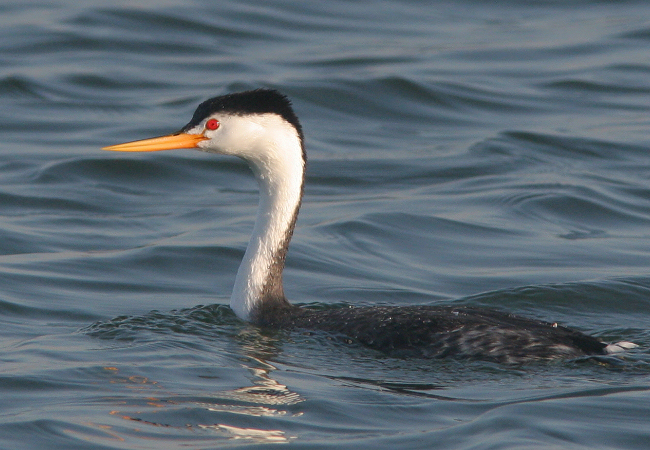
Location: South Bay, Imperial Beach, CA
Date: 2006-02-10
Lens: Canon 300mm IS F4 + 1.4x II Converter

 Clark's Grebe
Aechmophorus clarkii
Clark's Grebe
Aechmophorus clarkii
 Description
Description
First described in 1858, the Clark's Grebe was once considered a special color phase of the Western Grebe. Eventually the two birds were separated into distinct species because they nest side by side with very little interbreeding. Like the Western Grebe, the Clark's is known for its elaborate courtship display, which includes rapidly running across the waters surface. Another fun thing to see is a down-covered youngling riding on the back of its parent.
The Clark's Grebe primarily feeds by diving for fish. It also occasionally eats mollusks, crabs, and salamanders.
Black crown that does not include the eye. Black nape. White face, throat, and underparts. Dark blackish-brown back and wings. Long neck. Long, pointed, yellow bill. Red eye. White secondaries. Sexes similar. 22 to 30 inches in length.
Shallow coastal bays and estuaries. Breeds on large lakes with emergent vegetation.
 Nesting
Nesting3-4 bluish-white eggs with brown or buff colored stains. The eggs have a 23 day incubation period. Both parents incubate. Fledging occurs in 63-77 days. Both the male and female construct a floating nest made from plant material and is anchored to emergent vegetation. Breeds in large colonies.